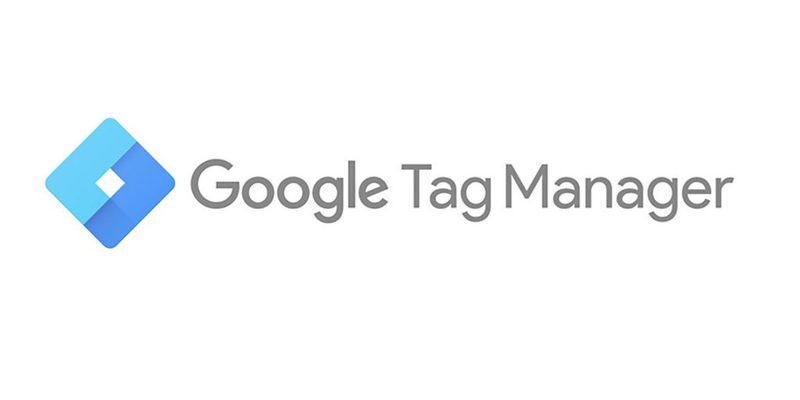What is Google Tag Manager?

Google Tag Manager – is a free tool from Google which allows users to manage, remove and deploy their marketing tags without the need of modifying their website code.
A successful digital marketing effort requires plenty of data in order to be successful and GTM is exactly the tool to use in order to boost a website’s marketing potential.
In this article, I’m going to focus entirely on the specifics of Google Tag Manager and explain ways it can be of use to many.
Looking for more information related to online marketing? Here’s my take on the basics of digital marketing.
Why is Google Tag Manager such a useful tool?
To understand why Google Tag Manager such a wonderful tool for marketers, we must first understand how the concept of data works in the world of digital marketing today.
Digital marketing, quite simply, is built upon data. No matter whether you own a small business website or a operate a large e-commerce entity, data helps you understand the extent of your marketing efforts success.
Things like Google Ads help you setup your marketing efforts and Google Analytics helps you to measure how well they are working, all of which are based upon data.
This is all very good, however, with the help of Google Tag Manager you can collect even more precise information that would otherwise be unavailable within each tool separately. All of this is done with the help of tags.
Tags, to put it simply, are brief snippets of code which collect information and send it to third parties. The third party in this case being you. Google Tag Manager allow you to track various actions that website visitors perform with the help of these tags.
Type of data Google Tag Manager can collect
| Data type | Possible? |
| Scroll tracking | ✔ |
| Form submissions | ✔ |
| File downloads | ✔ |
| Remarketing | ✔ |
| How users arrive | ✔ |
| Collecting survey data | ✔ |
And many other types.
How Google Tag Manager works

A very simple example could be taken from the same Google Analytics.
Someone visits your website and performs a certain action (scrolls, clicks, writes, submits, etc.). The data from the sequence is then sent from your website to your analytics account with the help of Google Tag Manager.
Website owners are interested in various kinds of data, which requires more tags and more code to be implemented within the website. This whole process could be pretty overwhelming, especially if your adding or editing directly witin your website’s source code.
Google Tag Manager makes working with tags much more easier, since you add and edit everything via the program’s web-based interface instead of tampering with your website’s code. This means that all of your tag information is within the same chunk of code and always readable by the system.
If you’re not a programmer, this is more than a sigh of relief.
Another important thing to mention when talking about Google Tag Manager and its functionality is the fact that it can work with tags from alternate sources as well.
Despite being a Google product, you can still use it to manage your Twitter, Bing, Hotjar and many other tags. The tools is really flexible and there’s only a few types of tags that GTM doesn’t understand or work with.
The positives and negatives of Google Tag Manager

Less reliance on web developers
Perhaps the biggest plus of using Google Tag Manager is the fact those who do marketing for a company have to rely less on programmers for implementing tags for them.
It’s no secret that devs are busy as it is with other, more important parts of the web project, and tagging is just an extra things to worry about.
With Google Tag Manager, all marketers need to ask programmers is to add a small piece of code to theandparts of the website which helps the program itself to operate.
From then on, you, as a marketer, are free to add or remove as many tags as you want with the help of Google Tag Manager and its neat interface.
Just imagine a situation where you only need to add a tag for a very brief period of time and then remove it. Without GTM, adding and removing everything will need to be done manually. So, Google Tag Manager saves time in the long run.
Still needs some technical knowledge to use
As I’ve said above, while using Tag Manager can lessen the workload you give to your developer team, you cannot work completely independent from them.
You will still need to add the default Tag Manager container to your website and the specific pages you are interested in monitoring.
Plus, there’s the issues of complex tags, while you can create most of them pretty easily with the Tag Manager pretty easily, customized and complex tags will still require help of an experienced programmer.
Also, if you have added some tags manually before using Google Tag Manager, you will need to remove them in order to avoid clashes within code and the gathering of duplicate data elements.
The platform is useful for most businesses
I’ve mentioned this before as well, but I can’t emphasize this enough. Google Tag Manager is very useful no matter the size or niche of your business entity.
Since you can work editing and adding your tags pretty much without the constant help of web developers, it’s really useful for small startups which don’t have their own developer team yet.
Likewise with enterprise level businesses. Google Tag Manager also allows complex tagging implementation and to add to use quite a number of them at the same time.
Regardless of what you’re trying to archive, Google Tag Manager allows businesses to manage their tags more easily and efficiently.
It can slow your website if setup without caution
If you’ve worked with manual marketing tags before, you’ve probably noticed that sequencing multiple tags at once can impact your website speed quite dramatically. If a website significantly slows down, visitors are less likely to convert since it takes longer for site itself to load everything.
With Google Tag Manager, however you can avoid load multiple tags synchronously, meaning each of your tags will fire only when it’s ready to. With the tool, you’ll be able to arrange the priority order for each tag, meaning you won’t have to sacrifice valuable website speed for the sake of gathering important website data.
However, you must not forget to do that in the first place, since setting tag priorities requires manual input from you.
Can still be utilized for mobile websites as well
Even though I’m focusing strictly on the web version of Google Tag Manager, it’s important to note that the tool can be used for mobile and AMP websites as well, not just standard ones.
In this case, you can edit, add or remove your tags without the need to issue and update to your mobile app, as data measuring remains real time regardless.
Though mobile marketing is a completely different animal, it’s still great to know that you can utilize the strengths of Google Tag Manager in this case as well.
Understanding the main components of Google Tag Manager

Before you start implementing Google Tag Manager for regular usage, in my opinion, there’s a few key concepts you need to understand well first.
This is especially relevant if you haven’t worked much with marketing tags before at all.
Containers
The first major concept is a container, which you will need to create in order to start using Google Tag Manager. A container is basically a space where all of your website tags are “held”.
Don’t worry, there’s nothing complicated about containers at all. When you will create an account for your website, you will get a piece of code to add your your website’s body and head sections in the sources code. While there are some plugins to help you out with that, your best bet would be to ask assistance from a web developer in order to add it .
After you’re done, that’s basically it. You are now free to add, edit or remove any tags you want with the help of Google Tag Manager.
Triggers
In order to gather important data about your visitors, each tag on your website has to server some kind of purpose in the overall picture. You might want to measure specific instances downloads for your app, form submissions or whenever someone clicks on your outbound links.
These instances, or conditions under which tags are fired are known as triggers. Each tag has to have at least one trigger assigned to it, otherwise it won’t function. The most basic for of trigger is probably the “Page View” trigger, meaning that your tag fires whenever a person visits that specific page.
Triggers can be broken down to two main parts that are important to understand: events and filters. Whenever you’re setting up a trigger for your tag, you’ll get a long of possible trigger types to choose from. These, in fact, are your events.
So, the “Page View” example I mentioned earlier will count as an event of someone visiting a page on your website.
With filters there’s a bit more to it. They can be broken down to three key components: values, operators and variables. I will talk about variables separately, but here’s the overall picture of filter components:
- Variables – type of variable involved in the tag’s functionality
- Operator – tells the tag whether an event needs to equal, be greater or less than a certain value.
- Value – the condition a tag needs to meet in order to fire.
Let’s take a more complex example to see how everything works:
Let’s say you want to see how many people read your blog in depth. For this, you will need a tag with a “Scroll Depth” even trigger set at, for example, at 75%. For filters, you’ll need to set those webpages that contain your blog. That means choosing “Some Pages” and then Page URLs that contain “yourwebsite.com/blog”.
You can get even more complex with your trigger settings. There might be instances, for example, where you don’t want your tag to fire. Let’s say you’ve setup a tag to fire on all pages, but want to exclude a few pages.
The easiest way to do so would be to setup a blocking trigger. It should be noted however, that Google Tag Manager prioritizes block triggers over others, so set up your exclusions carefully, so that nothing clashes and everything works as intended.
Variables
As you know by now, tags rely on triggers to be fired. Triggers themselves rely on the variable that you define. In this case the variable contains a certain value, which the trigger needs evaluate in order to determine whether to fire or not. If the value defined in the trigger is met, the tag will fire.
Another thing about using a variable is that it can help you out with is collect specific information to a data layer of your choice. The most simple example would be setting a tag to fire when a person adds a certain amount of products to their shopping cart. The variable in this case will be number of and type of products you define.
In addition, Google Tag Manager variables can be reused across multiple tags. You can for example create a variable that contains your Google Analytics ID number. That way, whenever you will create a more complex tag that involves your Analytics data, you’ll have a variable ready right at your disposal.
Variables themselves, it’s important to note, are of two main types: built-in ones and user-defined ones. Built-in ones are the most commonly used in Google Tag Manager, so you have access to them right away, no need to tinker with anything whatsoever, just select the right settings which work for you and you’re ready to head on.
Another type of variable is, of course, user-defined ones. Here you get much more freedom and flexibility to define exactly what you want. If you don’t find the one you need from the built-in ones, one defined specifically by you can help you collect data exactly as you prefer.
Data layers
Tags, as I’ve said before, need information to know whether or net to fire and start collecting your defined things. But how do the tags get that information?
One way could be of course, by checking the website’s HTML structure and registering the information that’s there. However, it can take much longer for the tags to fire, since there’s a lot of things to scan through.
Also, if the website’s HTML structure changes over time, tags can break. Besides, there’s certain information impossible to find right from the HTML file.
In such a case, you’ll be left without your marketing efforts working as well as they should.
That’s where data layers come in to play. In Google Tag Manager, data layers can be defined as JavaScript objects that help separate your specifically defined marketing tags separate from the rest of the website’s main code.
It also means that the tags don’t have to scan the whole html of a website in order to get the data they need, everything is collected and can be found in one specific place.
For the most basic functionality, Google Tag Manager data layers are and optional thing, since they can function perfectly without them. However, if you want to get more complex and collect very specific events with your tag, than data layers will be absolutely necessary.
A data layer needs to be added to the code right above the main Google Tag Manager container code. If place below the container, the layer will reset after loading and the Tag Manager won’t be able to read the data you have.
Once you place the data layer within the page’s code, you’re free to add whatever you want to it’s brackets found on the second line. This includes events, variables, information and so on.
Some info can be written directly into the layer, however, there’s also an option to push data dynamically into the tag, as a user performs a specific thing like downloading a file, or places certain products into their shopping cart.
All in all,
In this article I’ve talked about Google Tag Manager and the main features of it. I think it’s pretty obvious that this tool from Google is wonderful for marketers no matter what business they are working with, be it a small startup or a huge business entity.
With the help of Tag Manager, you’ll be able to set up the specifics of your tags and use them to collect very precise and useful information on how well your marketing efforts are paying off. I think I’ve only covered the very basics as there’s much more that the tool can help out with.
Anyway, I urge any marketer to start using Google Tag Manager as soon as possible, as the positive results will be immediate.






